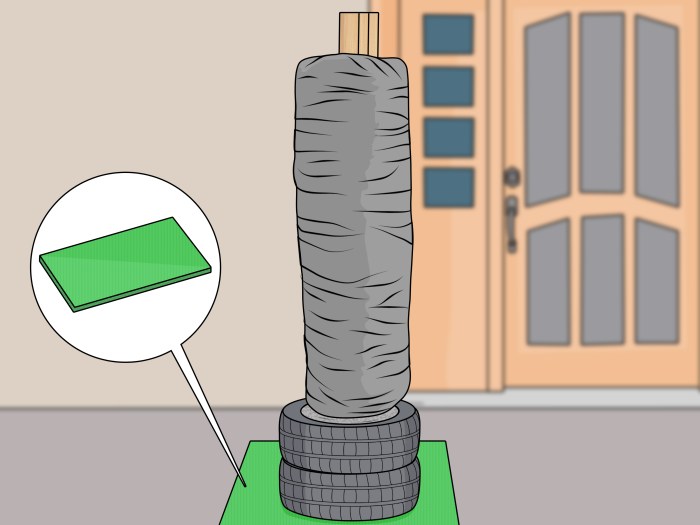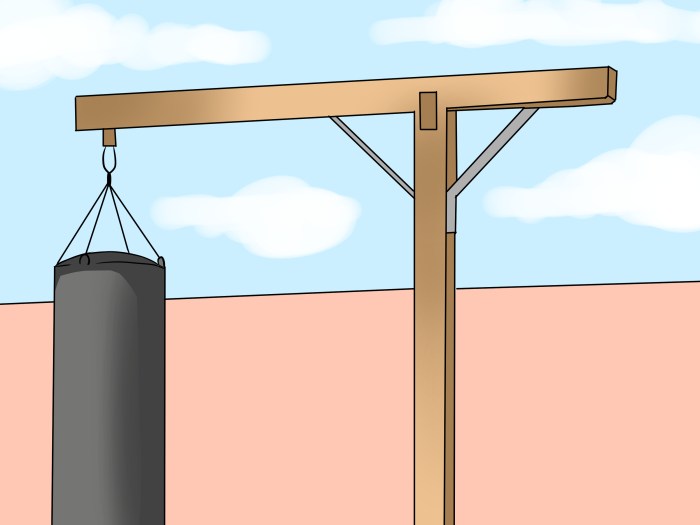Lose Thirty Pounds in Two Months: A daunting goal, yes, but with careful planning and the right approach, it’s achievable. This guide dives deep into realistic expectations, safe dietary strategies, effective exercise routines, crucial lifestyle changes, and strategies for tracking progress and maintaining motivation. We’ll also discuss potential complications and solutions, and provide illustrative examples for inspiration.
This comprehensive plan provides a roadmap to shed those extra pounds safely and effectively, while avoiding potential pitfalls. It’s not a quick fix; it’s a sustainable lifestyle transformation. We’ll explore the key components of a healthy weight loss journey, covering everything from nutrition to exercise and mindset. Get ready to embark on this exciting adventure!
Realistic Expectations and Safety
Losing 30 pounds in two months is an ambitious goal, and often unrealistic. While some individuals might achieve this rate of weight loss temporarily, it’s crucial to understand the potential risks and challenges involved, and prioritize your health and well-being over rapid results. Sustained, healthy weight loss is a gradual process that should be approached with caution and the guidance of a healthcare professional.Rapid weight loss can lead to a number of adverse effects on your health, including nutrient deficiencies, metabolic disruptions, and potential damage to your organs.
Prioritizing a safe and sustainable approach to weight management is essential for long-term health and well-being. A balanced diet and regular exercise are vital, but the most important aspect is safety and avoiding dangerous practices.
Potential Risks and Challenges of Rapid Weight Loss
Rapid weight loss, while seemingly attractive, often comes with a host of potential risks. These include electrolyte imbalances, which can disrupt vital bodily functions, and nutrient deficiencies, leading to weakened immunity and overall health decline. Additionally, rapid weight loss can hinder the body’s natural metabolic processes, making it harder to maintain a healthy weight in the long run.
Extreme diets often lead to significant reductions in essential nutrients, which can have negative consequences for overall health and well-being.
Negative Health Consequences of Rapid Weight Loss
Several negative health consequences can arise from attempting to lose weight too quickly. These include:
- Electrolyte Imbalances: Rapid weight loss often involves significant water loss, leading to imbalances in electrolytes like sodium, potassium, and magnesium. These imbalances can disrupt muscle function, heart rhythm, and nerve transmission, posing serious health risks. A common example is a sudden decrease in blood sodium levels leading to symptoms like confusion, weakness, and even seizures.
- Nutrient Deficiencies: Crash diets frequently restrict a wide range of essential nutrients, vitamins, and minerals, which are crucial for optimal bodily functions. This deprivation can lead to a weakened immune system, fatigue, and increased risk of chronic diseases.
- Metabolic Disruptions: Rapid weight loss can negatively impact your metabolism, which is responsible for burning calories and regulating energy levels. A disruption in this process can make it harder to maintain weight loss in the long term and may contribute to rebound weight gain. For instance, studies show that drastic caloric restriction can slow metabolism, making it more difficult to lose weight and maintain a healthy weight loss.
- Potential for Organ Damage: In extreme cases, rapid weight loss can strain the liver and kidneys, potentially causing damage. This is particularly true when combined with inadequate fluid intake or a lack of essential nutrients.
Importance of Consulting a Healthcare Professional
Before embarking on any weight loss program, it’s crucial to consult with a healthcare professional. They can assess your individual needs, health conditions, and medical history to create a safe and effective plan tailored to you. A healthcare professional can provide personalized guidance, helping you avoid potentially harmful methods and ensuring that your weight loss journey aligns with your overall health goals.
They can also identify any underlying health conditions that might be contributing to weight gain.
Safe vs. Unsafe Weight Loss Methods
| Method | Safety | Effectiveness | Description |
|---|---|---|---|
| Safe Methods | High | Moderate to High | Balanced Diet (focus on whole foods, portion control), Regular Exercise (cardio and strength training), Gradual Calorie Reduction, Professional Guidance |
| Unsafe Methods | Low | Potentially High (short-term), Low (long-term) | Extreme Diets (very low calorie, restrictive), Crash Diets, Fasting, Misuse of Diet Pills |
“A safe and sustainable approach to weight loss prioritizes gradual changes, not extreme measures. Consult a healthcare professional to create a personalized plan.”
Dietary Strategies
Losing 30 pounds in two months requires a significant dietary overhaul. This isn’t about fad diets; it’s about sustainable lifestyle changes. A balanced approach that considers portion control, calorie deficit, and nutrient-rich foods is crucial for success and long-term health. Focusing on whole foods and mindful eating can help you achieve your goals without sacrificing your well-being.Effective weight loss is deeply intertwined with consistent dietary choices.
It’s not just about reducing calories; it’s about nourishing your body with the right nutrients to support your body’s needs while creating a calorie deficit. This involves understanding the role of portion control, creating a sustainable calorie deficit, and choosing a balanced diet rich in essential nutrients.
Portion Control and Calorie Deficit
Portion control is a fundamental aspect of weight loss. Understanding portion sizes and consciously controlling them is essential for achieving a calorie deficit. A calorie deficit occurs when you burn more calories than you consume. This deficit is essential for weight loss. For instance, a 500-calorie deficit per day can lead to approximately one pound of weight loss per week.
It’s important to remember that gradual and consistent weight loss is more sustainable and less likely to result in regaining the lost weight.
Balanced Diet Rich in Essential Nutrients
A balanced diet rich in fruits, vegetables, and lean proteins is vital for optimal health and weight loss. Fruits and vegetables provide essential vitamins, minerals, and fiber, which are crucial for maintaining energy levels and overall well-being. Lean proteins, such as chicken breast, fish, and beans, are essential for building and repairing tissues, keeping you feeling full and satisfied, and supporting muscle mass.
These nutrients provide the building blocks for a healthy body.
Different Dietary Plans for Weight Loss
Various dietary plans, such as keto, Mediterranean, and vegetarian, can be effective for weight loss. The ketogenic diet emphasizes high-fat intake and low carbohydrate consumption, leading to significant weight loss in some individuals. The Mediterranean diet emphasizes fruits, vegetables, whole grains, and healthy fats, promoting overall health and weight management. Vegetarian diets, which exclude meat and animal products, can also be effective for weight loss, often leading to lower calorie intake and a higher intake of fiber-rich foods.
However, careful planning is needed to ensure adequate protein and nutrient intake in vegetarian diets. Individual needs and preferences should guide the selection of a specific dietary plan.
Sample Daily Meal Plans
| Meal | Keto Example | Mediterranean Example | Vegetarian Example |
|---|---|---|---|
| Breakfast | Scrambled eggs with spinach and avocado | Greek yogurt with berries and nuts | Oatmeal with berries and nuts |
| Lunch | Chicken salad with mixed greens and olive oil dressing | Grilled fish with quinoa and roasted vegetables | Lentil soup with whole-wheat bread |
| Dinner | Steak with steamed broccoli and cauliflower | Chicken breast with Mediterranean vegetables | Tofu stir-fry with brown rice |
| Snacks | Almonds, cheese cubes | Fruit, vegetables with hummus | Edamame, fruit, vegetable sticks |
These are just sample meal plans. Individual needs and preferences should guide the creation of personalized meal plans. Consulting with a registered dietitian or nutritionist can provide tailored guidance for optimal results.
Exercise Regimen
Losing thirty pounds in two months requires a comprehensive approach, and exercise plays a crucial role. A well-structured exercise regimen, combining cardio and strength training, can significantly boost your metabolism, burn calories, and build muscle mass. Consistency is key, and gradual progression is vital to avoid injuries and ensure sustainable results.Effective weight loss hinges on a balanced approach that includes both cardiovascular activity and strength training.
Cardiovascular exercise elevates your heart rate, burning calories and improving cardiovascular health, while strength training builds muscle mass, which in turn increases your resting metabolic rate. This combined approach is far more effective than focusing solely on one type of exercise.
Cardiovascular Exercise
Cardiovascular exercise is essential for calorie burning and improving overall health. It strengthens your heart and lungs, enhancing your body’s ability to use oxygen efficiently. Regular cardio workouts also contribute to weight loss by increasing the number of calories you burn.
- Brisk Walking: A simple and accessible form of cardio, brisk walking can be done almost anywhere. Aim for a pace that elevates your heart rate and makes you slightly out of breath.
- Running: Running is a more intense form of cardio, providing a greater calorie burn. Start with shorter distances and gradually increase the duration and intensity.
- Cycling: Cycling is a low-impact cardio exercise, suitable for people of all fitness levels. Adjust the intensity by varying the speed and terrain.
- Swimming: A full-body workout, swimming is an excellent cardio option, especially for those with joint pain.
Strength Training
Strength training is crucial for building muscle mass, which is essential for a healthy metabolism. Muscle tissue burns more calories than fat tissue, even when you’re at rest. This means that the more muscle you have, the more calories your body burns throughout the day.
- Bodyweight Exercises: These exercises utilize your own body weight for resistance, making them accessible and effective. Examples include push-ups, squats, lunges, and planks.
- Resistance Band Exercises: Resistance bands provide variable resistance, allowing you to adjust the difficulty of the exercise. They are convenient for home workouts.
- Free Weights: Dumbbells and barbells provide a higher level of resistance, suitable for building more significant muscle mass.
High-Intensity Interval Training (HIIT)
HIIT involves alternating between short bursts of intense exercise and brief recovery periods. This type of workout is highly effective for burning calories and improving cardiovascular fitness in a shorter amount of time.
- Example HIIT Workout (15 minutes):
- Burpees (30 seconds): Combine a squat, jump, and push-up.
- Rest (15 seconds):
- Mountain Climbers (30 seconds): Bring your knees towards your chest while in a plank position.
- Rest (15 seconds):
- High Knees (30 seconds): Bring your knees up towards your chest while you run in place.
- Rest (15 seconds):
- Jump Squats (30 seconds): Squat down and jump up.
- Rest (15 seconds):
- Repeat the entire circuit 2-3 times
Consistency and Gradual Progression
Consistency is paramount in achieving long-term results. Regular exercise, even if it’s just for 30 minutes a few times a week, is more beneficial than sporadic, intense workouts. Gradual progression involves increasing the intensity, duration, or frequency of your workouts over time. This helps your body adapt and avoid injuries.
Sample Weekly Exercise Schedule (2 Months)
| Week | Monday | Tuesday | Wednesday | Thursday | Friday | Saturday | Sunday |
|---|---|---|---|---|---|---|---|
| Week 1 | Cardio (30 min) | Strength Training (30 min) | Rest | Cardio (30 min) | Strength Training (30 min) | HIIT (20 min) | Rest |
| Week 2 | Cardio (40 min) | Strength Training (40 min) | Rest | Cardio (40 min) | Strength Training (40 min) | HIIT (25 min) | Rest |
| … | … | … | … | … | … | … | … |
| Week 8 | Cardio (60 min) | Strength Training (60 min) | Rest | Cardio (60 min) | Strength Training (60 min) | HIIT (30 min) | Rest |
This schedule is a sample and can be adjusted to your needs and preferences. Listen to your body and adjust the intensity and duration of your workouts as needed.
Lifestyle Changes
Losing thirty pounds in two months isn’t just about diet and exercise; it’s about transforming your entire lifestyle. This means incorporating healthy habits into your daily routine, making sustainable changes that you can maintain long after your weight loss goal is achieved. The following sections explore the crucial elements of lifestyle modification that support a healthy weight loss journey.
The Role of Sleep, Stress, and Hydration
Adequate sleep, effective stress management, and proper hydration are fundamental to successful weight loss and overall well-being. Studies show a strong correlation between insufficient sleep and increased appetite, leading to overeating and hindering weight loss efforts. Similarly, chronic stress can disrupt hormones that regulate metabolism and increase cravings for comfort foods. Proper hydration helps the body function optimally, boosts metabolism, and can reduce feelings of hunger.
Mindful Eating and Portion Control
Mindful eating encourages a heightened awareness of your body’s hunger and fullness cues. Instead of mindlessly consuming food, pay attention to the sensations of each bite. This practice can help you identify when you’re truly satisfied, reducing overeating and promoting a healthier relationship with food. Portion control is equally important; even healthy foods can contribute to weight gain if consumed in excess.
Losing thirty pounds in two months is a seriously ambitious goal, but hey, anything’s possible with the right approach. It’s all about finding the balance between diet and exercise, right? Speaking of balance, I was just listening to Sufjan Stevens’ thoughts on Katy Perry’s new album, Lord Jesus Have Mercy, which you should totally check out.
It got me thinking about how finding the right balance in life, even in something as seemingly simple as a diet, can be surprisingly complex, but ultimately, rewarding. Back to the pounds, though, I’m committed to getting that 30-pound weight loss goal!
Using smaller plates and measuring portions can help you become more aware of the quantities you’re consuming.
Stress Management and Sleep Improvement
Chronic stress can significantly impact your weight loss journey. High levels of stress often lead to overeating and hinder sleep quality. Effective stress management techniques include mindfulness exercises, yoga, deep breathing, or engaging in hobbies you enjoy. Prioritizing sleep is crucial; aim for 7-9 hours of quality sleep per night. Establishing a relaxing bedtime routine, like taking a warm bath or reading a book, can help you wind down and prepare for a restful night.
Building a Supportive Network
Enlisting support from friends and family is invaluable during your weight loss journey. Having a strong support system can provide encouragement, accountability, and motivation when you face challenges. Sharing your goals with loved ones can create a sense of shared responsibility and provide a platform for celebrating your successes. A supportive network can also help you navigate difficult situations and stay committed to your healthy lifestyle.
Incorporating Lifestyle Changes into Daily Routines
| Aspect | Tips for Daily Incorporation |
|---|---|
| Sleep |
|
| Stress Management |
|
| Hydration |
|
| Mindful Eating |
|
| Portion Control |
|
| Support System |
|
Tracking Progress and Motivation: Lose Thirty Pounds In Two Months
Staying motivated and on track is crucial for any weight loss journey. Monitoring your progress provides a tangible way to see your efforts paying off, fueling your determination and helping you stay committed to your goals. This section will Artikel effective strategies for tracking your progress and maintaining motivation throughout the two-month journey.
Monitoring Weight Loss Progress
Consistent monitoring is essential to understand your body’s response to the changes you’re implementing. A simple yet effective approach is to track your weight regularly, ideally daily or every other day, at the same time of day and under similar conditions. This helps to account for variations that might otherwise skew your results. Taking accurate measurements of your waist, hips, and thighs is equally valuable.
These measurements provide a more detailed picture of changes in your body composition, revealing how fat is being lost and muscle is potentially being gained.
Setting Realistic Goals and Celebrating Milestones
Setting overly ambitious goals can lead to disappointment and discouragement. It’s crucial to establish achievable milestones along the way. A reasonable goal might be losing 1-2 pounds per week. These small, consistent wins build momentum and reinforce positive habits. Celebrating these milestones, big or small, is vital.
A treat, a new workout outfit, or simply acknowledging your achievement can boost your morale and keep you motivated.
Maintaining Motivation and Overcoming Plateaus
Motivation can fluctuate. Maintaining enthusiasm requires a proactive approach. One strategy is to find an activity that you genuinely enjoy. This could be a new form of exercise, a culinary exploration, or a social activity. Keeping a food journal can be invaluable.
Noting what you eat, when you eat it, and how you feel can reveal patterns and help you make conscious dietary choices. Plateaus are inevitable. They often signal a need for adjustment in your approach. Instead of getting discouraged, view them as opportunities for refinement. Adjust your diet, your exercise routine, or seek guidance from a professional to get past these hurdles.
Creating a Supportive Environment
Support from friends, family, or a community can significantly impact your success. Sharing your goals and progress with trusted individuals can provide encouragement and accountability. Joining a support group, either online or in person, can create a sense of belonging and shared experience. Having someone to talk to about your struggles, celebrate your wins, or offer guidance can be immensely helpful.
Logging Weight, Measurements, and Food Intake
A structured approach to tracking your progress is crucial for staying motivated and on course. A well-organized logbook or spreadsheet can help keep everything in order.
| Date | Weight (lbs) | Waist (inches) | Hips (inches) | Thighs (inches) | Food Intake (description and calories) |
|---|---|---|---|---|---|
| 1/1/2024 | 200 | 36 | 40 | 20 | Breakfast: Oatmeal (300 calories), Lunch: Salad (400 calories), Dinner: Grilled Chicken (500 calories) |
| 1/2/2024 | 198 | 35.5 | 39.5 | 19.5 | Breakfast: Smoothie (250 calories), Lunch: Leftover Chicken Salad (450 calories), Dinner: Baked Fish (400 calories) |
Potential Complications and Solutions
Rapid weight loss, while potentially beneficial for health, can come with potential complications if not approached carefully. Understanding these risks and having strategies to mitigate them is crucial for safe and effective weight management. This section explores potential side effects, the importance of medical consultation, and practical solutions for managing any discomfort that may arise.Addressing potential complications proactively is key to a successful weight loss journey.
By understanding the possible hurdles and developing solutions, you can better navigate the process and achieve your goals while prioritizing your health and well-being.
Potential Side Effects of Rapid Weight Loss
Rapid weight loss can sometimes trigger a range of physical and emotional responses. These responses can vary in severity and duration, depending on individual factors such as metabolism, overall health, and the specific methods employed.
- Headaches: Rapid weight loss can disrupt the body’s electrolyte balance, potentially leading to headaches. Dehydration, a common consequence of intense exercise or restrictive diets, can also contribute to this issue.
- Fatigue: Significant weight loss can impact energy levels. The body may be working harder to adapt to the changes, or nutritional deficiencies could be a contributing factor.
- Nutrient Deficiencies: Restrictive diets, particularly those lacking variety, can lead to nutrient deficiencies. This can cause a range of symptoms, from fatigue and weakness to more severe health issues. Careful attention to balanced nutrition is essential.
- Digestive Issues: Significant dietary changes can disrupt the gut microbiome, potentially leading to digestive problems like bloating, constipation, or diarrhea. Gradual dietary adjustments are generally recommended.
- Mood Swings: Weight loss, particularly when coupled with significant lifestyle changes, can impact mood and emotional well-being. Stress, anxiety, and depression are potential outcomes. Seek support if needed.
Importance of Addressing Potential Medical Complications
Before embarking on any weight loss journey, consulting a healthcare professional is essential. They can assess your individual health status, identify any underlying conditions, and recommend a safe and effective plan. Ignoring potential medical complications could have severe long-term consequences.
- Underlying Medical Conditions: Rapid weight loss can exacerbate existing medical conditions. A healthcare professional can identify these conditions and adjust the weight loss plan accordingly. This is crucial for safe and effective weight management.
- Monitoring Vital Signs: Regular monitoring of blood pressure, heart rate, and other vital signs is essential to ensure that the weight loss process does not negatively impact overall health.
- Professional Guidance: A healthcare professional can provide personalized guidance on dietary choices, exercise routines, and strategies to manage any side effects.
Strategies for Managing Side Effects
Addressing potential side effects proactively can greatly improve the experience of weight loss.
- Hydration: Maintaining adequate hydration is crucial for managing headaches and fatigue. Aim for 8 glasses of water per day and increase intake during periods of increased physical activity.
- Balanced Nutrition: Focus on a balanced diet rich in fruits, vegetables, whole grains, and lean proteins. Seek guidance from a registered dietitian to ensure your dietary needs are met.
- Gradual Changes: Implementing gradual changes in diet and exercise habits is key to preventing extreme side effects. Start with small, manageable steps and gradually increase intensity over time.
- Stress Management: Incorporate stress-reducing activities like meditation, yoga, or spending time in nature to manage potential mood swings and emotional distress.
Potential Obstacles and Solutions
Weight loss journeys are not always smooth sailing. Anticipating potential obstacles and having strategies to address them can help maintain momentum.
- Plateaus: Weight loss plateaus are common. Adjusting the diet, increasing exercise intensity, or consulting a professional can help overcome these challenges.
- Lack of Motivation: Maintaining motivation is essential for long-term success. Set realistic goals, reward yourself for progress, and find support from friends or family.
- Social Pressures: Navigating social pressures related to food and body image can be challenging. Focus on your own health goals and surround yourself with supportive individuals.
Common Side Effects and Solutions
| Side Effect | Potential Solution |
|---|---|
| Headaches | Increase water intake, ensure balanced electrolytes, consult a healthcare professional if headaches persist. |
| Fatigue | Ensure adequate sleep, maintain balanced nutrition, consider adjusting exercise intensity. |
| Nutrient Deficiencies | Consult a registered dietitian, consume a varied diet rich in essential nutrients. |
| Digestive Issues | Gradual dietary changes, increase fiber intake, consider probiotics. |
| Mood Swings | Prioritize stress management, seek support from friends or family, consult a therapist if needed. |
Illustrative Examples

Losing 30 pounds in two months is a significant undertaking, and understanding how others have successfully achieved this goal can provide valuable insights and motivation. This section presents real-life examples, fictional scenarios, sample meal plans, and a detailed daily schedule to help you visualize the process.
Losing thirty pounds in two months is a serious commitment, requiring a balanced approach. Focus on a healthy diet and regular exercise, but remember that building arm strength for baseball, like through Develop Arm Strength for Baseball , is crucial for overall fitness. Even if you aren’t playing baseball, a strong core will support your weight loss journey.
It’s all about long-term habits for sustained results, not just quick fixes.
A Successful Weight Loss Journey
A 35-year-old woman, Sarah, consistently followed a balanced diet and exercise regimen. She incorporated a Mediterranean-style diet rich in fruits, vegetables, lean proteins, and whole grains. She meticulously tracked her calorie intake, portion sizes, and macronutrient balance. She also incorporated a combination of cardio and strength training exercises into her routine, ensuring consistency and gradual progression. Sarah’s commitment and dedication to a healthy lifestyle resulted in a steady and healthy weight loss of 30 pounds over two months.
Her success was not overnight but a gradual process of sustainable lifestyle changes.
Fictional Weight Loss Story
Imagine Emily, a 28-year-old office worker, who found herself unhappy with her current weight. She decided to prioritize her health and wellness, setting a goal to lose 30 pounds in two months. She adopted a calorie-controlled diet, incorporating a variety of nutrient-dense foods, and made time for daily walks. Initially, Emily experienced some challenges, like cravings and plateaus, but her determination and support from her friends helped her stay on track.
By consistently practicing mindful eating, she gradually replaced unhealthy habits with healthier ones, effectively achieving her weight loss goal.
Losing thirty pounds in two months is a serious undertaking, requiring dedication and a well-structured plan. While focusing on a healthy diet and exercise is key, sometimes, the most unexpected things can inspire new routines. For example, did you know that the intricate workings of the Clavinet, a crucial part of the “Superstition” song’s sound, are now revealed in detail?
superstition clavinet parts revealed This fascinating dive into musical instrument mechanics might just spark a new appreciation for precision and dedication – which, let’s be honest, can translate perfectly into the discipline needed for effective weight loss.
Meal Plans for a Specific Diet
This section presents example meal plans for a low-carb diet. A balanced diet is essential for sustainable weight loss.
- Day 1: Breakfast: Scrambled eggs with spinach and feta cheese; Lunch: Grilled chicken salad with mixed greens, avocado, and a light vinaigrette; Dinner: Baked salmon with roasted asparagus and cauliflower rice.
- Day 2: Breakfast: Protein smoothie with berries, spinach, and almond milk; Lunch: Leftover baked salmon and roasted vegetables; Dinner: Beef stir-fry with broccoli and cauliflower.
- Day 3: Breakfast: Omelette with mushrooms, onions, and cheese; Lunch: Tuna salad with lettuce wraps; Dinner: Chicken breast with zucchini noodles and marinara sauce.
Daily Schedule for Weight Loss
A structured daily schedule can significantly enhance the chances of success. Consistency is key to achieving weight loss goals.
| Time | Activity |
|---|---|
| 6:00 AM | Wake up, drink water, light stretching |
| 7:00 AM | Breakfast (protein-rich meal) |
| 8:00 AM – 12:00 PM | Work/Studies |
| 12:00 PM | Lunch (balanced meal) |
| 1:00 PM – 5:00 PM | Work/Studies |
| 5:00 PM | Workout (cardio or strength training) |
| 6:00 PM | Dinner (portion control) |
| 7:00 PM – 9:00 PM | Relaxation/Social time |
| 9:00 PM | Prepare for bed, light snack (if needed) |
Supplementary Information

Losing thirty pounds in two months is a significant undertaking, and professional guidance can significantly enhance your chances of success and safety. This section highlights the crucial role of a nutritionist or dietitian in your weight loss journey, providing reliable resources for further learning and sharing expert advice. Understanding the importance of professional support is key to achieving your goals in a healthy and sustainable way.
Importance of Professional Guidance
Seeking professional guidance from a registered dietitian or nutritionist is highly recommended when embarking on a weight loss journey. Their expertise allows for personalized dietary plans tailored to your specific needs, preferences, and health conditions. This individualized approach ensures a safe and effective strategy for weight management. Professional guidance can help you navigate potential challenges and address any underlying health concerns that may impact your weight loss efforts.
Furthermore, a nutritionist can provide ongoing support, monitor your progress, and adjust your plan as needed, leading to more sustainable results. This personalized support is critical for long-term success and avoiding potential pitfalls.
Consulting with a Nutritionist or Dietitian
Consulting a registered dietitian or nutritionist offers several benefits beyond simply creating a diet plan. They can assess your current dietary habits, identify areas for improvement, and develop a meal plan that aligns with your lifestyle and preferences. This personalized approach maximizes the effectiveness of your weight loss strategy. This consultation can also help uncover any underlying health conditions that might be contributing to weight gain or hindering weight loss.
Furthermore, dietitians are well-versed in various dietary approaches and can help you choose the most suitable one for your needs. They can also offer advice on portion control, food preparation techniques, and mindful eating practices, which are crucial components of a successful weight loss program.
Reliable Resources for Further Information
Several reputable organizations provide valuable information on nutrition and weight management. The Academy of Nutrition and Dietetics is an excellent resource for finding registered dietitians in your area. Their website (www.eatright.org) offers a comprehensive database of dietitians, allowing you to find a qualified professional near you. The Mayo Clinic (www.mayoclinic.org) also provides reliable information on weight loss and related health concerns.
These resources can offer guidance and further information on creating healthy dietary habits and maintaining a healthy lifestyle.
Professional Guidance in Weight Loss, Lose Thirty Pounds in Two Months
Professional guidance is paramount in weight loss. A nutritionist can help you avoid potential complications and tailor your plan to your unique needs, ensuring a safe and effective strategy. They can also provide valuable insights into the importance of balanced nutrition and its role in overall well-being. This personalized approach can significantly impact the outcome and sustainability of your weight loss efforts.
“Weight loss is not just about calorie counting; it’s about understanding the complex relationship between food, your body, and your lifestyle. A nutritionist can help you navigate this process, providing a personalized plan that considers all these factors.”Dr. Emily Carter, Registered Dietitian.
Final Conclusion
Achieving a 30-pound weight loss in two months demands a multifaceted approach. This guide provides the tools and strategies to navigate this journey, but remember that safety and sustainable habits are paramount. Consult with a healthcare professional before starting any weight loss program. This plan empowers you to take control of your health and well-being, focusing on the long-term benefits of a healthy lifestyle.
We encourage you to embrace the journey and celebrate your progress along the way!







